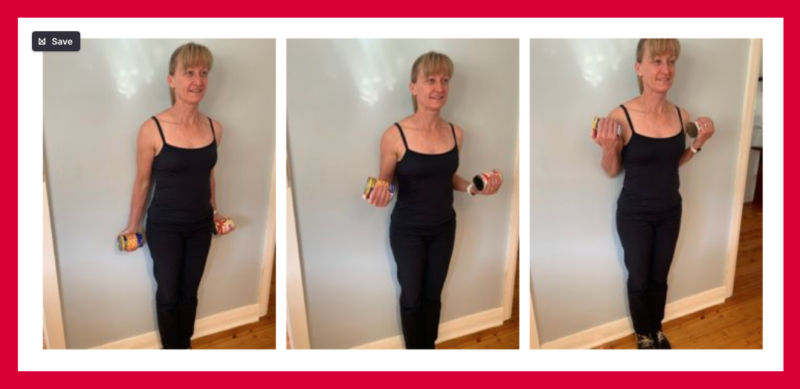The shoulder is a very versatile and complex joint. Due to its ‘ball and socket’ structure, it can move in multiple directions and support weight in various positions.
This is beneficial for a range of activities, but it means the shoulder is inherently more unstable than other joints in the body. It is like a sea lion balancing a ball on its nose, and for this, it is very prone to injury.
There are many causes of shoulder pain, the most common of which are soft tissue injuries.
Soft tissue injuries can include rotator cuff tendinopathy or rupture, and/or subacromial impingement. Other injuries can include adhesive capsulitis (frozen shoulder), acromioclavicular and glenohumeral joint osteoarthritis, or subacromial bursitis.
In the elderly, fractures caused by falls are also common due to osteoporosis. Half of these types of fractures are displaced and require surgery.
Shoulder pain and injury is more common in females (25%) than men (17%). The good news is these conditions respond to treatment that improves your quality of life.
Non-operative treatment is the preferred strategy for the elderly to avoid surgery and other complications.
Physiotherapy is a common and beneficial preference, focusing on range of movement and rotator cuff strengthening. Other treatment strategies may include icing the shoulder and non-steroidal anti-inflammatory drugs.
Looking after your shoulder is important to prevent injury and to continue with all those fun, daily activities.
For some ideas to help keep your shoulder joint strong and mobile, here are some exercises to complete each day. As always, first ensure you are able to safely complete the exercises by consulting your physio, GP or relevant health professional.
Exercise 1 – Pendular movements

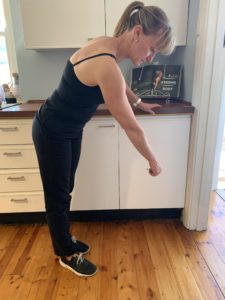
Rest one hand on a table and let the other arm hang down. Move your arm in a circle, clockwise and then anticlockwise.
Do 10 circles in each direction, on each arm.
Exercise 2 – Shoulder blade protraction and retraction
Place your hands on a wall at shoulder level. Now round your back so that your shoulder blades move out and round your upper back. Squeeze your shoulder blades back together and repeat. Do this 10 times, going through the cycle of protraction and retraction.


Exercise 3 – Biceps curls using tins or light weights as you get stronger

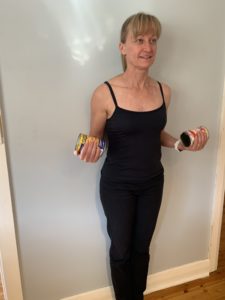
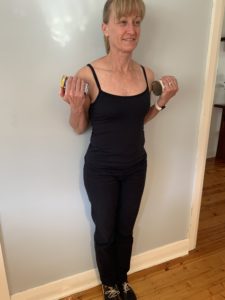
Standing against a wall with weights or cans in your hands, move from straight elbows to bent elbows keeping your elbows tucked into your sides.
Do this 20 times, nice and slowly.
Exercise 4 – Triceps curls
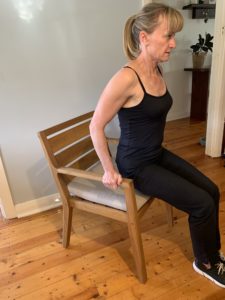
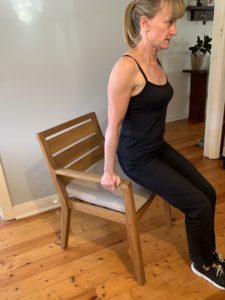
Sitting on a chair that has arms, lift your body weight off of the chair. Moving your feet further in front of you will make the exercise a bit harder.
Do this 10 times, slowly.
Exercise 5 – Extension for the hips, trunk and shoulders


Stand against a wall, trying to keep your spine and head against the wall. Lift your arms so they are against the wall with elbows bent. Move your arms up and down along the wall but do not allow your arms to come away from the wall. This is just like making angels in the snow.
Do this 10 times up and down slowly, concentrating on your posture.
Exercise 6 – External rotation, static hold
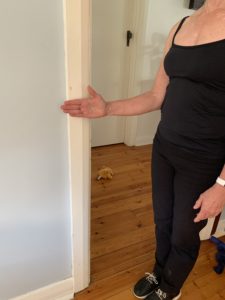
Stand in the doorway and place the top part of your hand on the wall. Keep your elbow tucked into your side at all times. Now push against the wall with your hand and hold for three seconds. Relax and repeat 10 times.
Exercise 7 – Internal rotation, static hold

Stand in the doorway and place the palm of your hand on the wall. Keep your elbow tucked into your side at all times. Now push against the wall with your hand and hold for three seconds. Relax and repeat 10 times.
Exercise 8 – Shoulder elevation using a stick



Holding a stick or broom handle, lift your arms to 90 degrees. If you are able to take the stick all the way above your head without pain, then you may do so.
Repeat 10 times.
Exercise 9 – Shoulder internal rotation and abduction using a stick
Using a stick or broom held behind your back, move your arms to the right and then the left to get a stretch through the shoulder joint.
Repeat this 10 times each side.
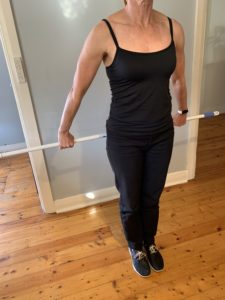
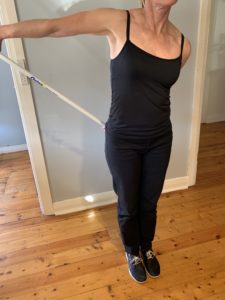
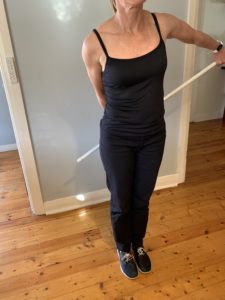
Exercise 10 – Shoulder stretch
To get a good stretch through the back of your shoulder, take the right arm across your body and use your left hand to get an even stronger stretch by pushing your arm over to the right. Do not push into pain.
Hold the stretch for 20 seconds each side.

If you are interested in creating an exercise program to improve or maintain your shoulder strength, range of movement and/or to manage the pain in your shoulder, please contact our friendly team here at The Physio Co. We would love to help you on your health and fitness journey.
(Article written by Karleen Scott and Madeline Low)
Reference: Shoulder Pain in the Elderly, Hermoso & Calvo, 2009.

 1300 797 793
1300 797 793
